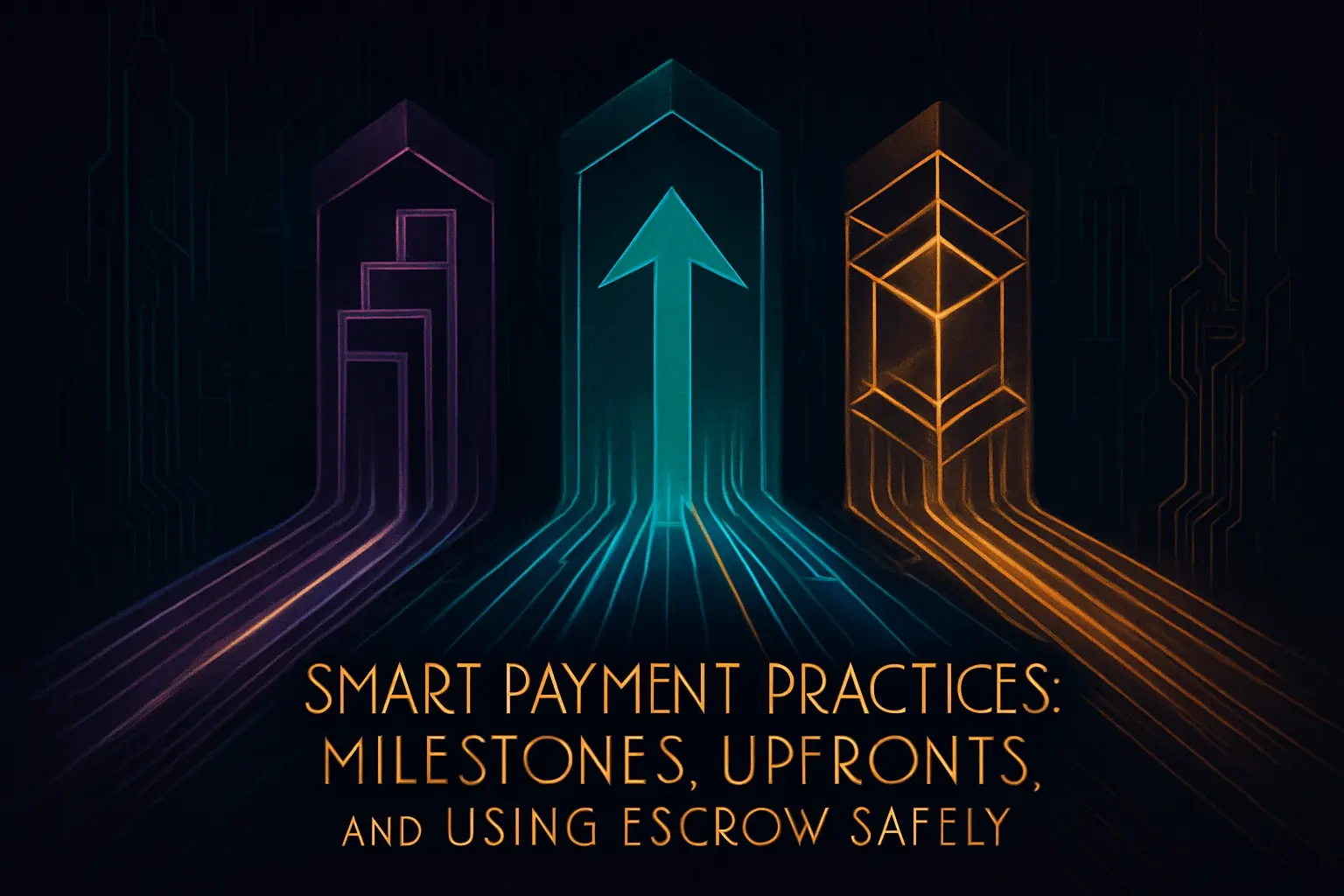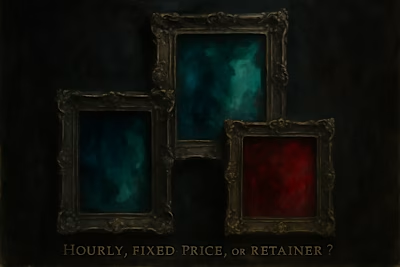Smart Payment Practices: Milestones, Upfronts, and Using Escrow Safely

Smart Payment Practices: Milestones, Upfronts, and Using Escrow Safely
The Importance of an Upfront Deposit
What is a Standard Deposit?
Benefits for the Client
Benefits for the Freelancer
Milestone Payments: Tying Payments to Progress
What Are Milestone Payments?
Example of a Milestone Structure
Why Milestones Reduce Risk for Everyone
Using Escrow Services for Maximum Security
How Do Escrow Services Work?
The Benefit of a Neutral Third Party
Built-in Dispute Resolution
Final Payment and Handover
The 'Payment Upon Completion' Clause
Connecting Final Payment to IP Transfer
Conclusion
References
Smart Payment Practices: Milestones, Upfronts, and Using Escrow Safely
The Importance of an Upfront Deposit
What is a Standard Deposit?
Benefits for the Client
Benefits for the Freelancer
Milestone Payments: Tying Payments to Progress
What Are Milestone Payments?
Example of a Milestone Structure
Why Milestones Reduce Risk for Everyone
Using Escrow Services for Maximum Security
How Do Escrow Services Work?
The Benefit of a Neutral Third Party
Built-in Dispute Resolution
Final Payment and Handover
The 'Payment Upon Completion' Clause
Connecting Final Payment to IP Transfer
Conclusion
References
Posted Jul 6, 2025
Paying a freelancer shouldn't be risky. Learn smart payment strategies like upfront deposits, milestone payments, and using secure escrow services to ensure a fair and safe process for both you and your designer.







